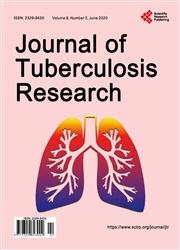Effectiveness and Safety of 9-Month Treatment Regimen for Multidrug-Resistant Tuberculosis in the Philippines
引用次数: 1
Abstract
Background: The Philippines has a burden of drug-resistant tuberculosis (DR-TB). One of the key challenges in the programmatic management of DR-TB (PMDT) is the high rate of loss to follow-up (38% in the 2010 cohort). An urgent need for a shorter, more tolerable, less expensive treatment regimen exists. The aim of the operational study is to determine the efficacy and safety of the short treatment regimen among drug resistant TB. Methods: This is a prospective single-arm cohort study evaluating the effectiveness and safety of a shorter 9 - 11-month treatment regimen (9MTR) for rifampi-cin-resistant/multi-drug resistant TB (RR/MDR-TB) in 10 PMDT facilities. All eligible consenting adult patients with rifampicin-resistant TB were enrolled and received the standardized 9-month treatment regimen (9MTR), including injectables, with a follow-up after 12 months of treatment completion. Results: A total of 329 patients were enrolled from July 2015 to December 2016. At the 6th month post-enrollment, 256 (77.8%) of them had cul-ture-negative months of treatment. Conclusion: The 9-month treatment regimen had a high treatment success rate with a favorable safety profile. The loss to fol-low-up was reduced; however, it was still a challenge. The introduction of the 9MTR via operational research had a major impact on building national capacity and infrastructure for the programmatic adoption of a new regimen. Ten PMDT centers received training and experience, created diagnostic pathways, and active drug safety monitoring and management were built.菲律宾耐多药结核病9个月治疗方案的有效性和安全性
背景:菲律宾存在耐药结核病(DR-TB)负担。耐药结核病规划管理的主要挑战之一是随访失失率高(2010年队列中为38%)。迫切需要一种更短、更容易忍受、更便宜的治疗方案。这项业务研究的目的是确定短期治疗方案对耐药结核病的疗效和安全性。方法:这是一项前瞻性单组队列研究,评估在10个PMDT设施中较短的9 - 11个月治疗方案(9MTR)对利福平耐药/多药耐药结核病(RR/MDR-TB)的有效性和安全性。所有符合条件的成年利福平耐药结核病患者均被纳入研究,并接受标准化的9个月治疗方案(9MTR),包括注射治疗,并在治疗完成12个月后进行随访。结果:2015年7月至2016年12月共入组329例患者。入组后6个月,256例(77.8%)患者接受了培养阴性治疗。结论:9个月的治疗方案治疗成功率高,安全性好。减少了随访损失;然而,这仍然是一个挑战。通过业务研究引进地铁9号线对建设国家能力和基础设施,以便在方案上采用新方案产生了重大影响。10个PMDT中心接受了培训和经验,建立了诊断途径,并建立了主动的药物安全监测和管理。
本文章由计算机程序翻译,如有差异,请以英文原文为准。
求助全文
约1分钟内获得全文
求助全文

 求助内容:
求助内容: 应助结果提醒方式:
应助结果提醒方式:


